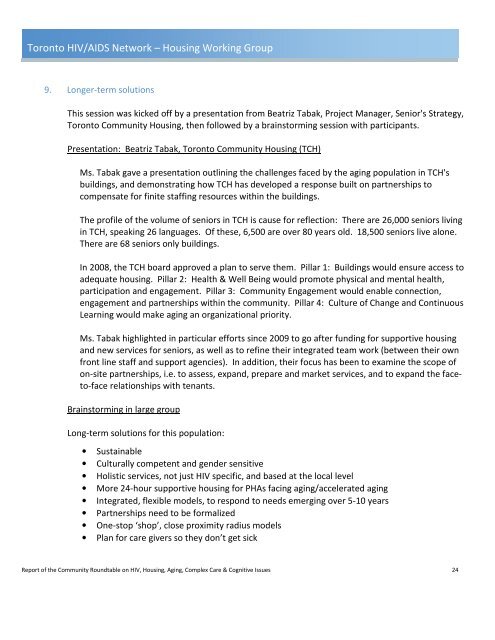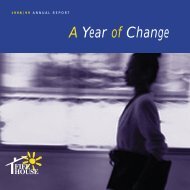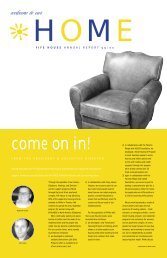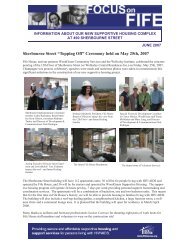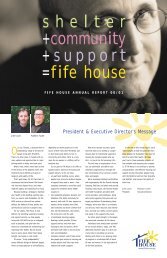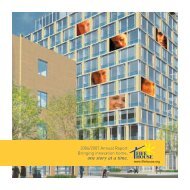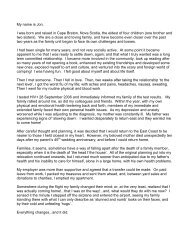Toronto HIV/AIDS Network â Housing Working Group - Fife House
Toronto HIV/AIDS Network â Housing Working Group - Fife House
Toronto HIV/AIDS Network â Housing Working Group - Fife House
- No tags were found...
You also want an ePaper? Increase the reach of your titles
YUMPU automatically turns print PDFs into web optimized ePapers that Google loves.
<strong>Toronto</strong> <strong>HIV</strong>/<strong>AIDS</strong> <strong>Network</strong> – <strong>Housing</strong> <strong>Working</strong> <strong>Group</strong>9. Longer-term solutionsThis session was kicked off by a presentation from Beatriz Tabak, Project Manager, Senior's Strategy,<strong>Toronto</strong> Community <strong>Housing</strong>, then followed by a brainstorming session with participants.Presentation: Beatriz Tabak, <strong>Toronto</strong> Community <strong>Housing</strong> (TCH)Ms. Tabak gave a presentation outlining the challenges faced by the aging population in TCH'sbuildings, and demonstrating how TCH has developed a response built on partnerships tocompensate for finite staffing resources within the buildings.The profile of the volume of seniors in TCH is cause for reflection: There are 26,000 seniors livingin TCH, speaking 26 languages. Of these, 6,500 are over 80 years old. 18,500 seniors live alone.There are 68 seniors only buildings.In 2008, the TCH board approved a plan to serve them. Pillar 1: Buildings would ensure access toadequate housing. Pillar 2: Health & Well Being would promote physical and mental health,participation and engagement. Pillar 3: Community Engagement would enable connection,engagement and partnerships within the community. Pillar 4: Culture of Change and ContinuousLearning would make aging an organizational priority.Ms. Tabak highlighted in particular efforts since 2009 to go after funding for supportive housingand new services for seniors, as well as to refine their integrated team work (between their ownfront line staff and support agencies). In addition, their focus has been to examine the scope ofon-site partnerships, i.e. to assess, expand, prepare and market services, and to expand the faceto-facerelationships with tenants.Brainstorming in large groupLong-term solutions for this population:• Sustainable• Culturally competent and gender sensitive• Holistic services, not just <strong>HIV</strong> specific, and based at the local level• More 24-hour supportive housing for PHAs facing aging/accelerated aging• Integrated, flexible models, to respond to needs emerging over 5-10 years• Partnerships need to be formalized• One-stop ‘shop’, close proximity radius models• Plan for care givers so they don’t get sickReport of the Community Roundtable on <strong>HIV</strong>, <strong>Housing</strong>, Aging, Complex Care & Cognitive Issues 24


